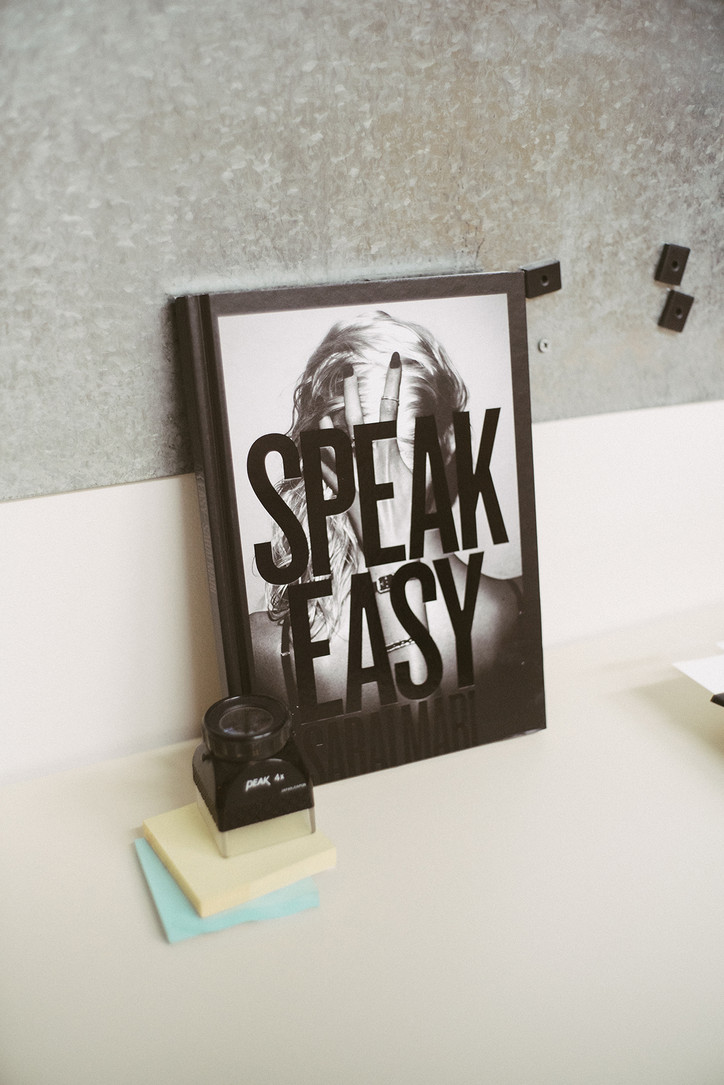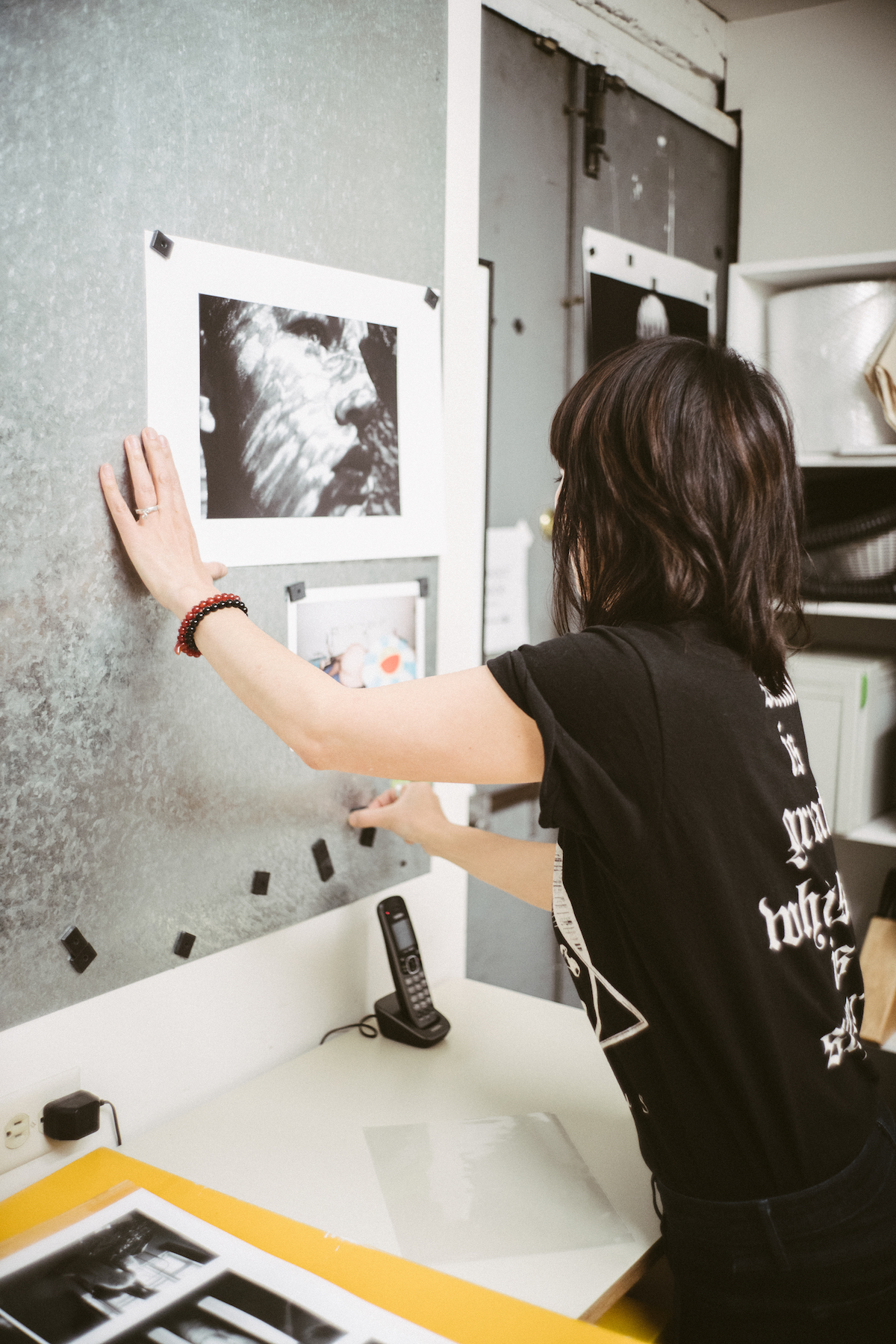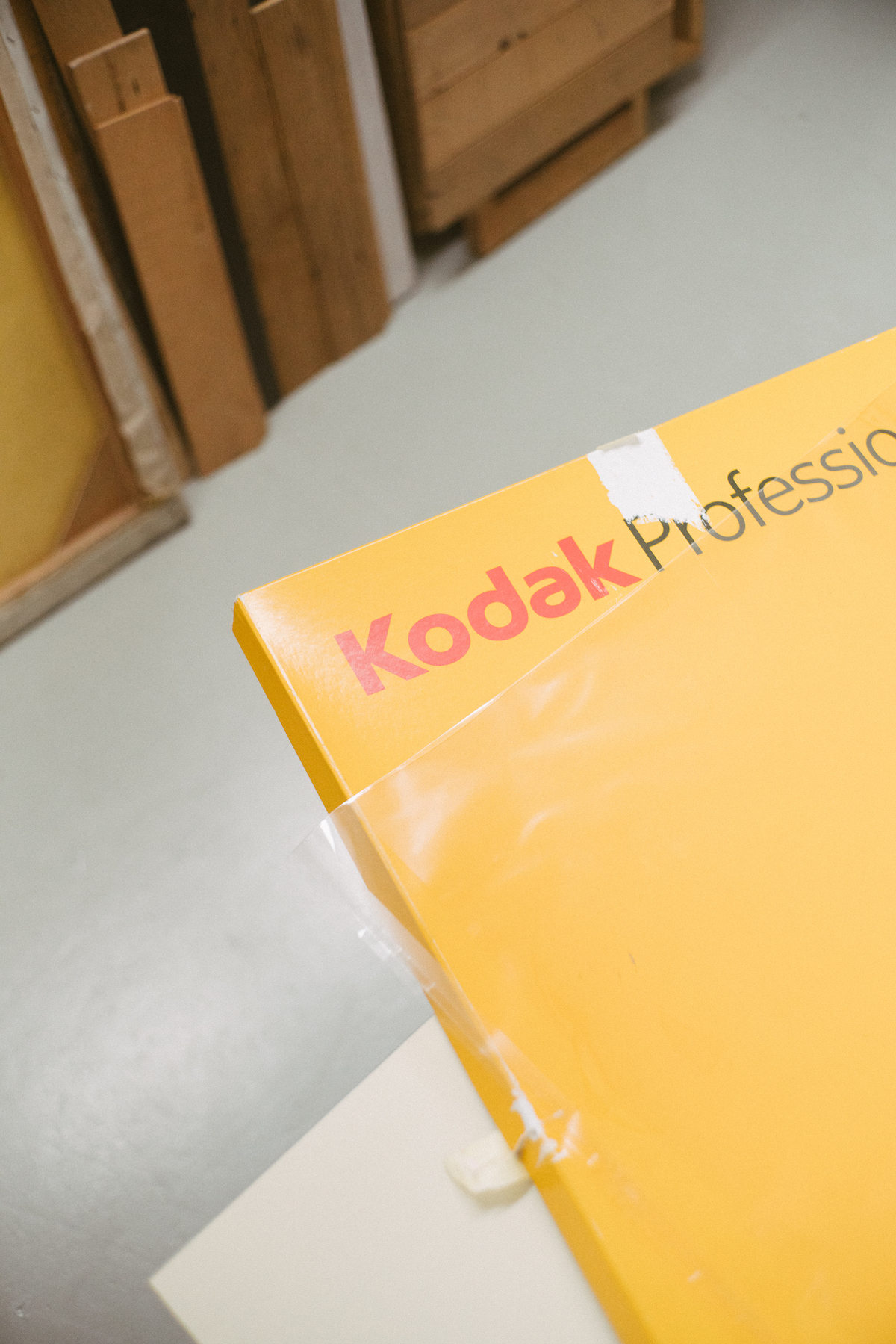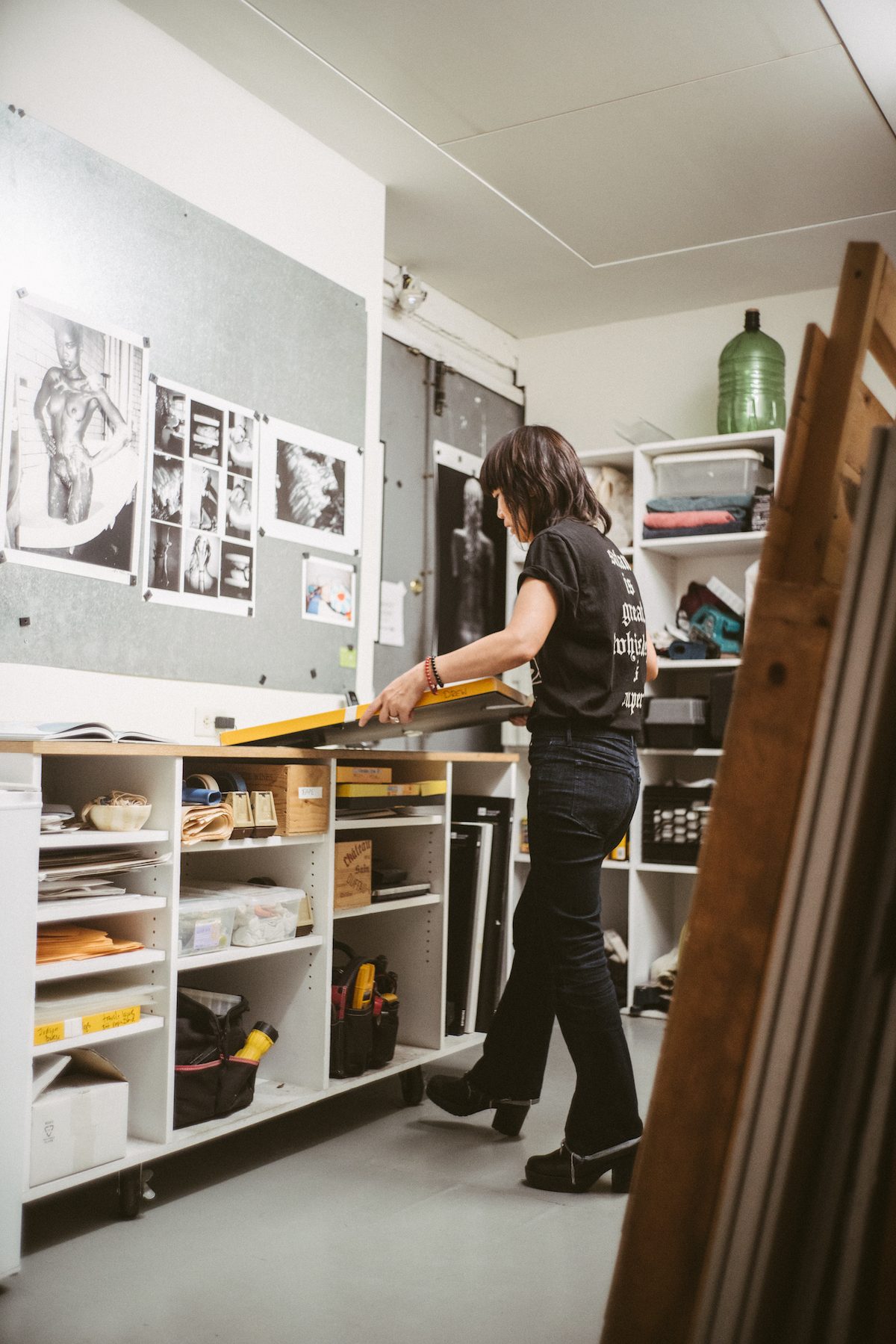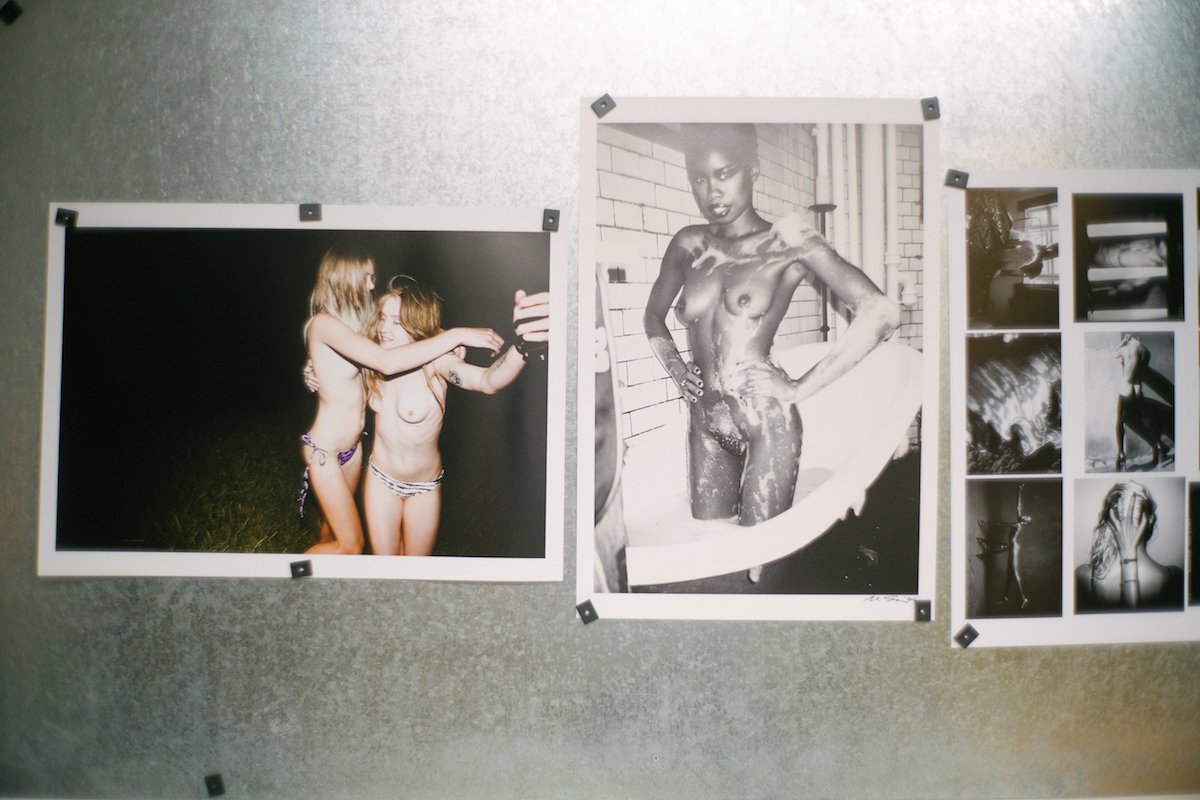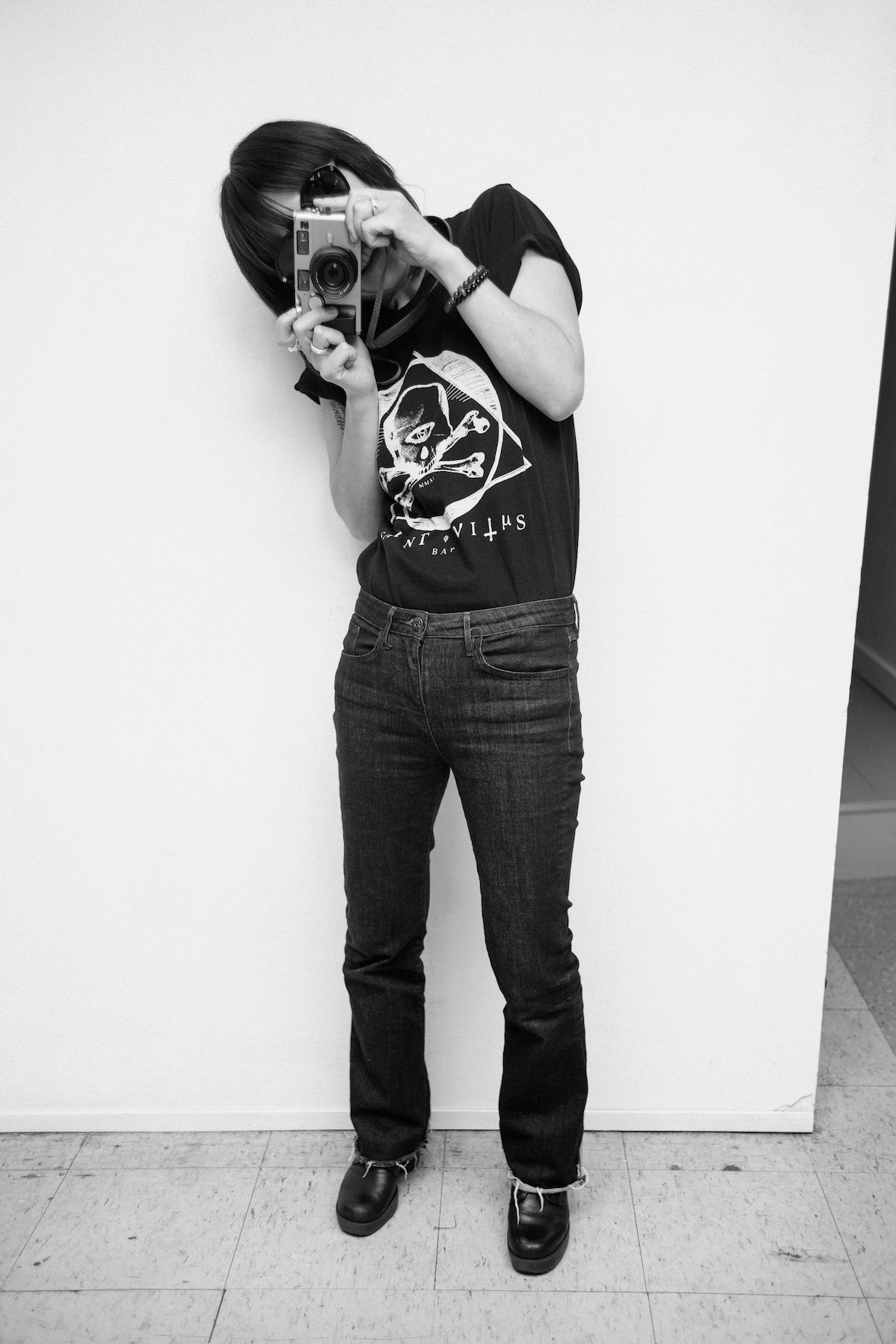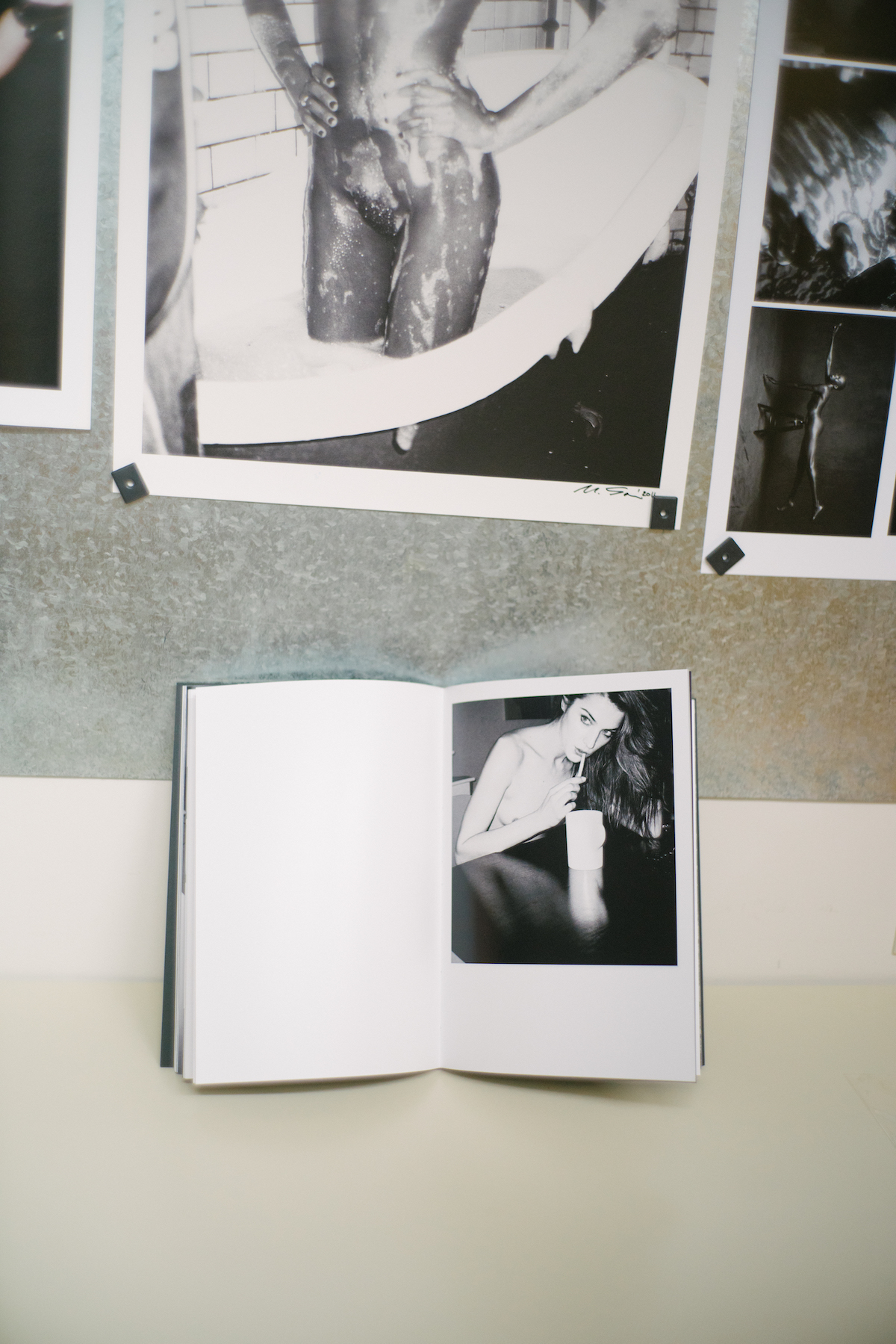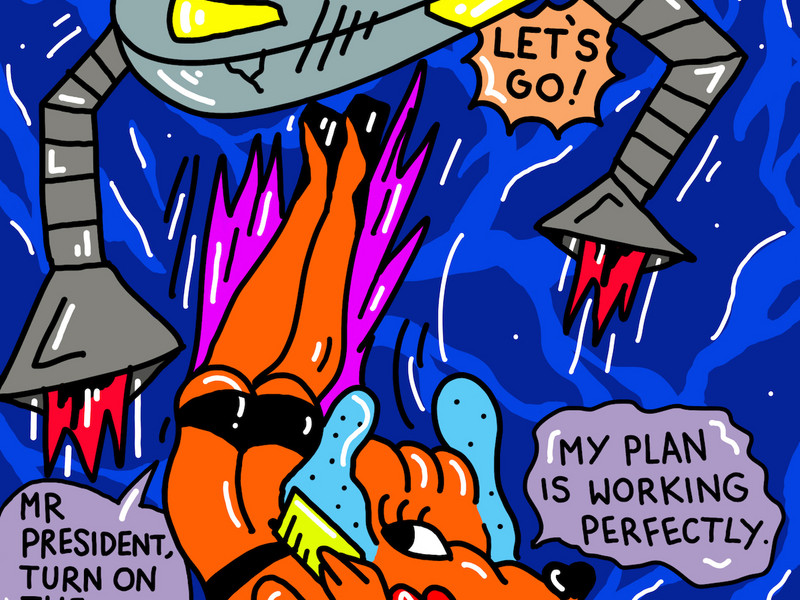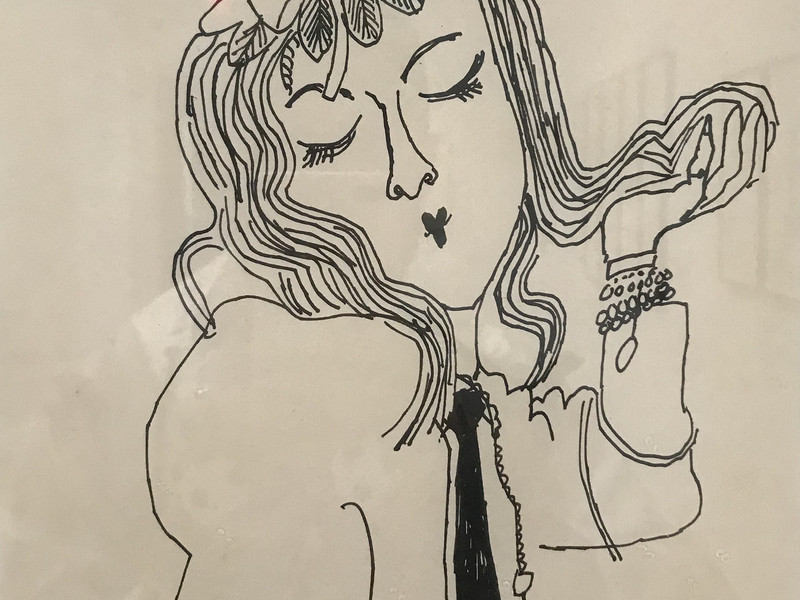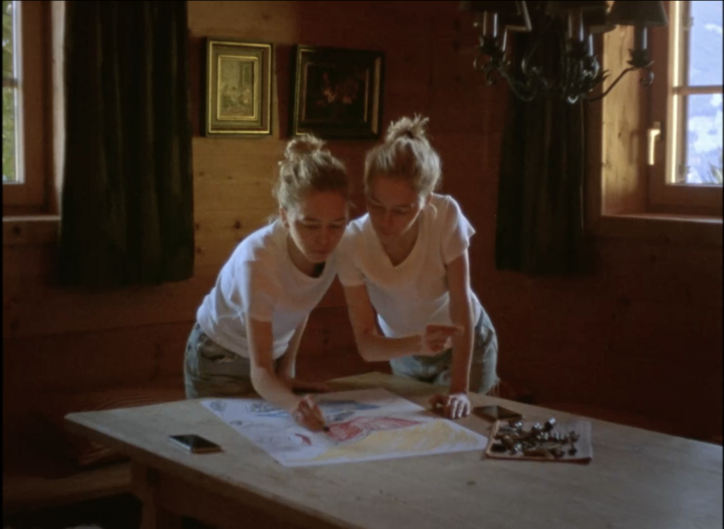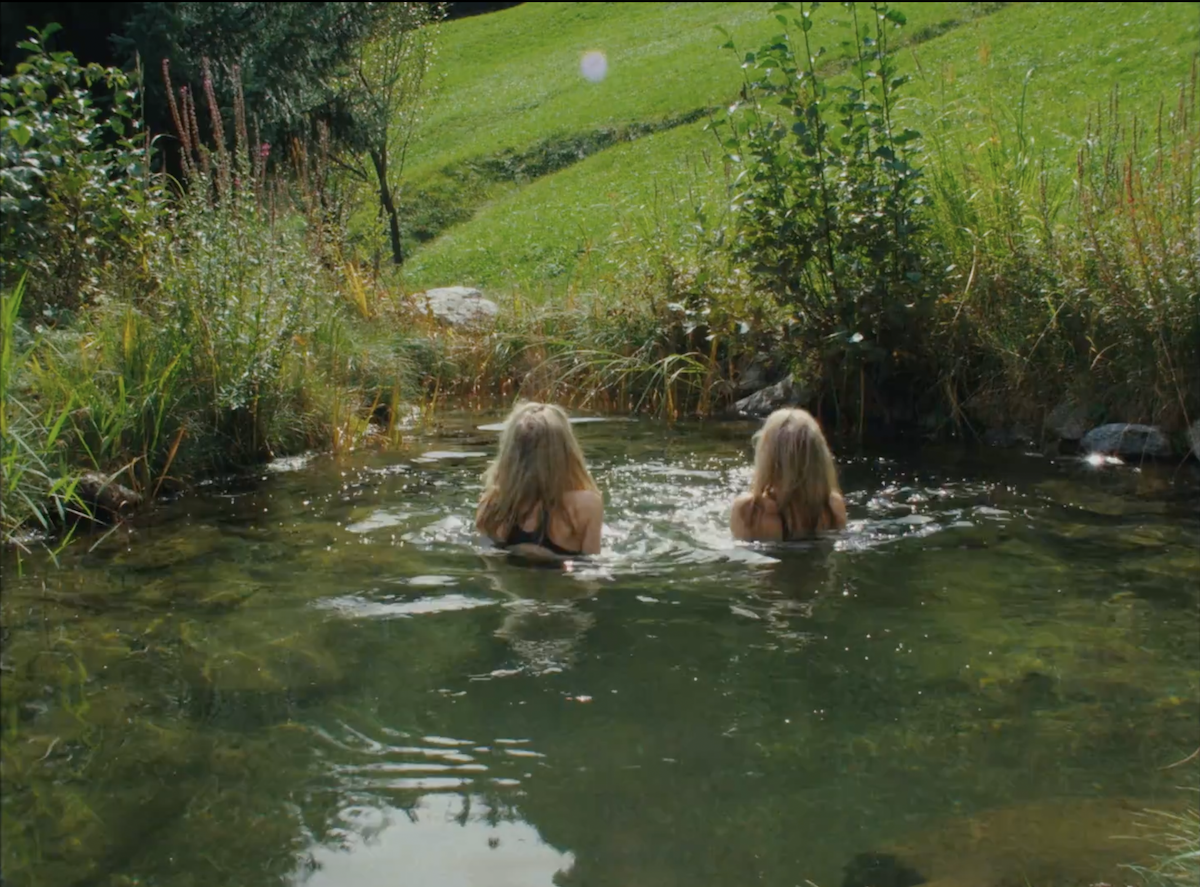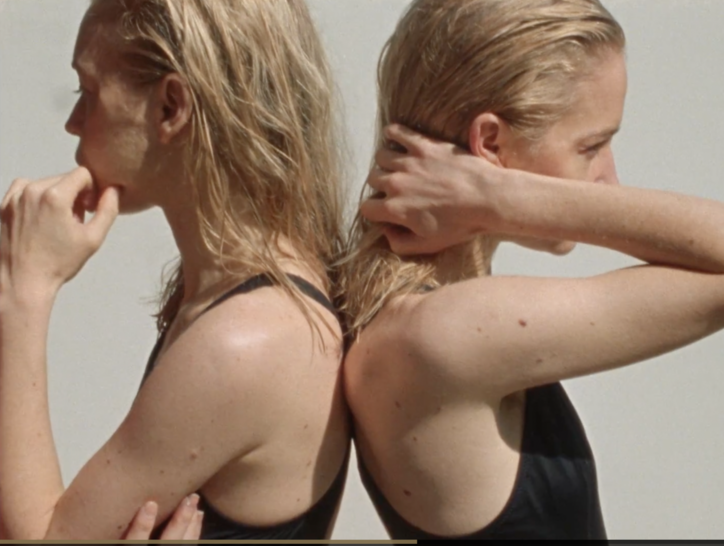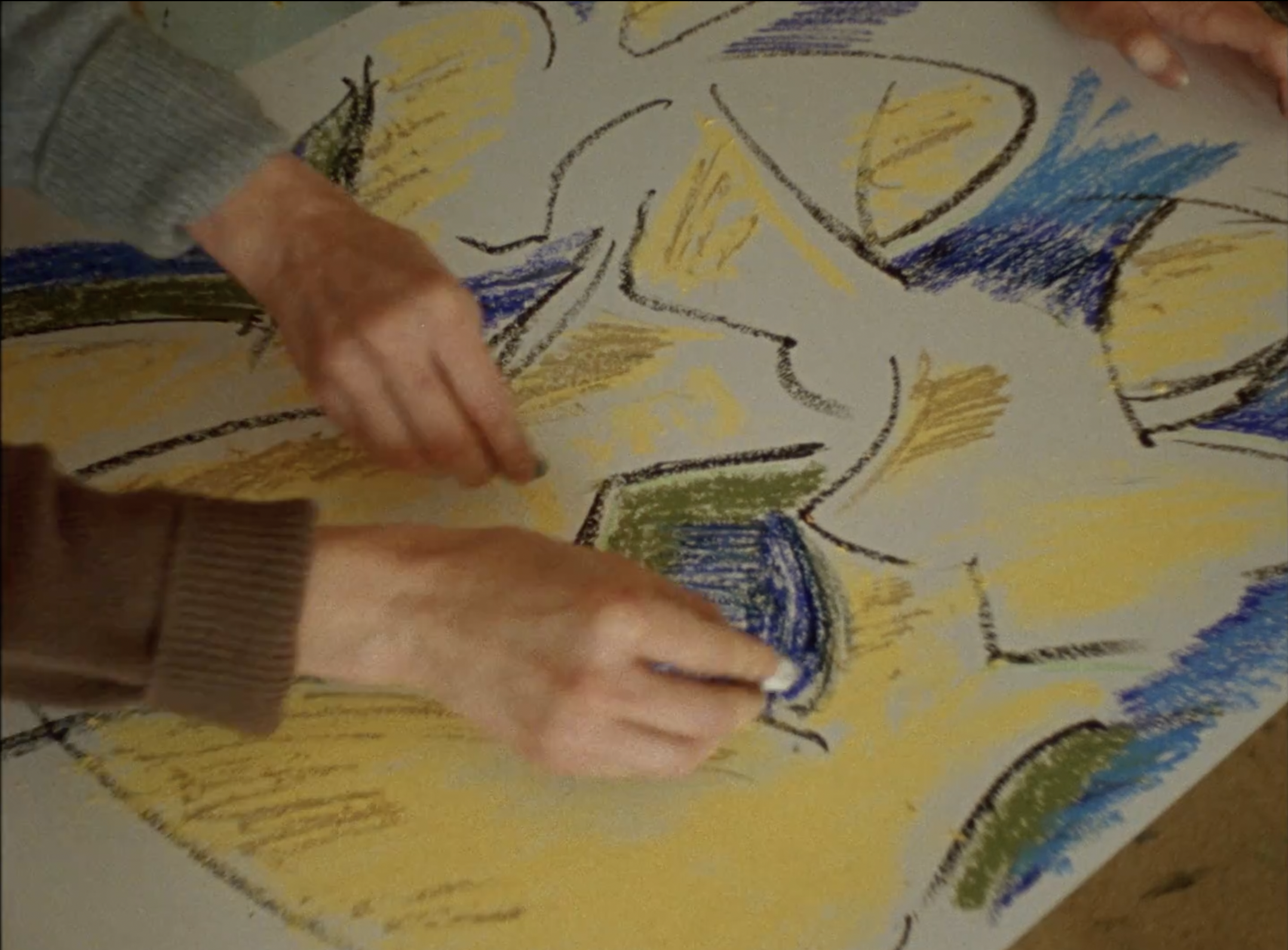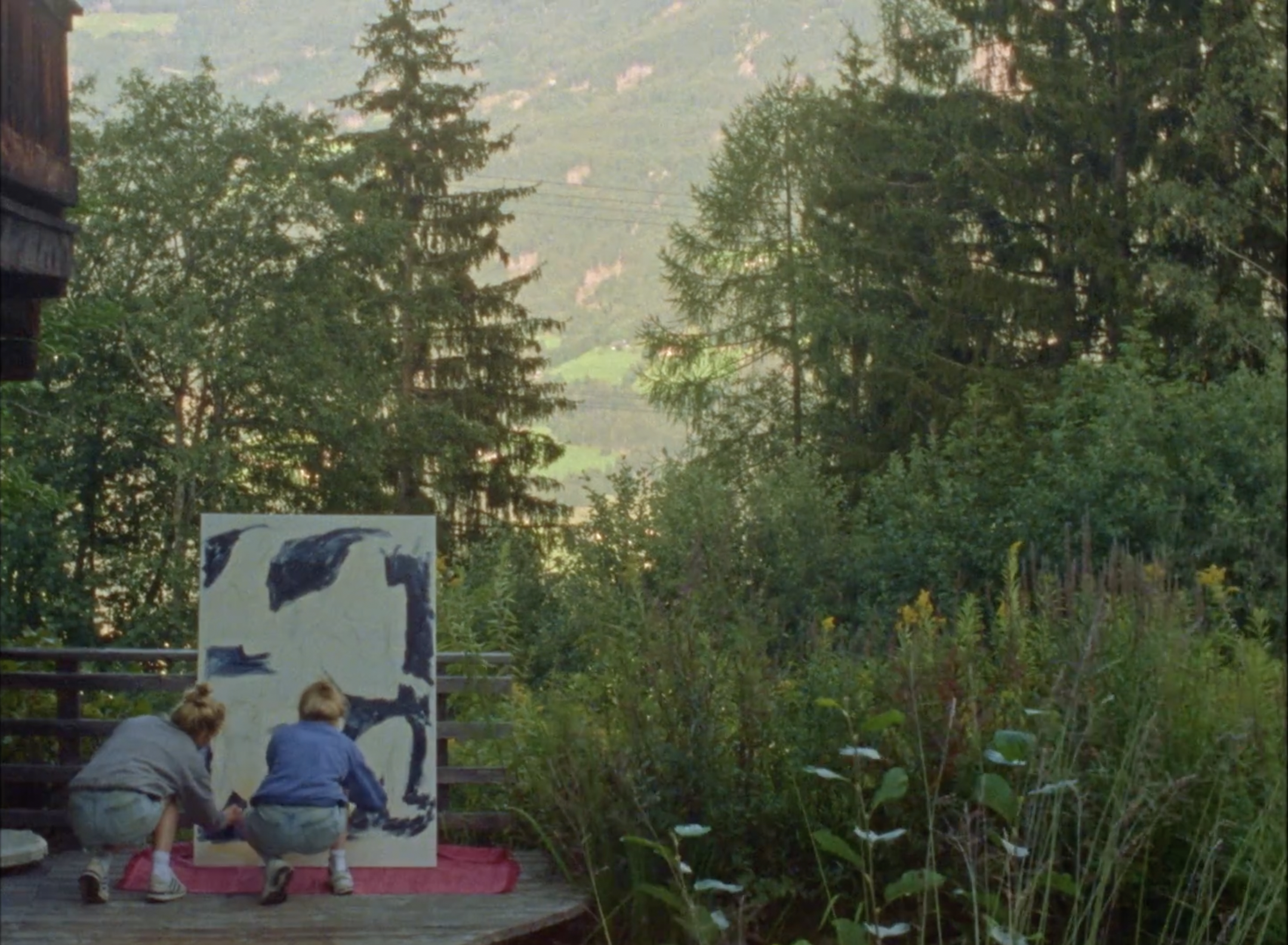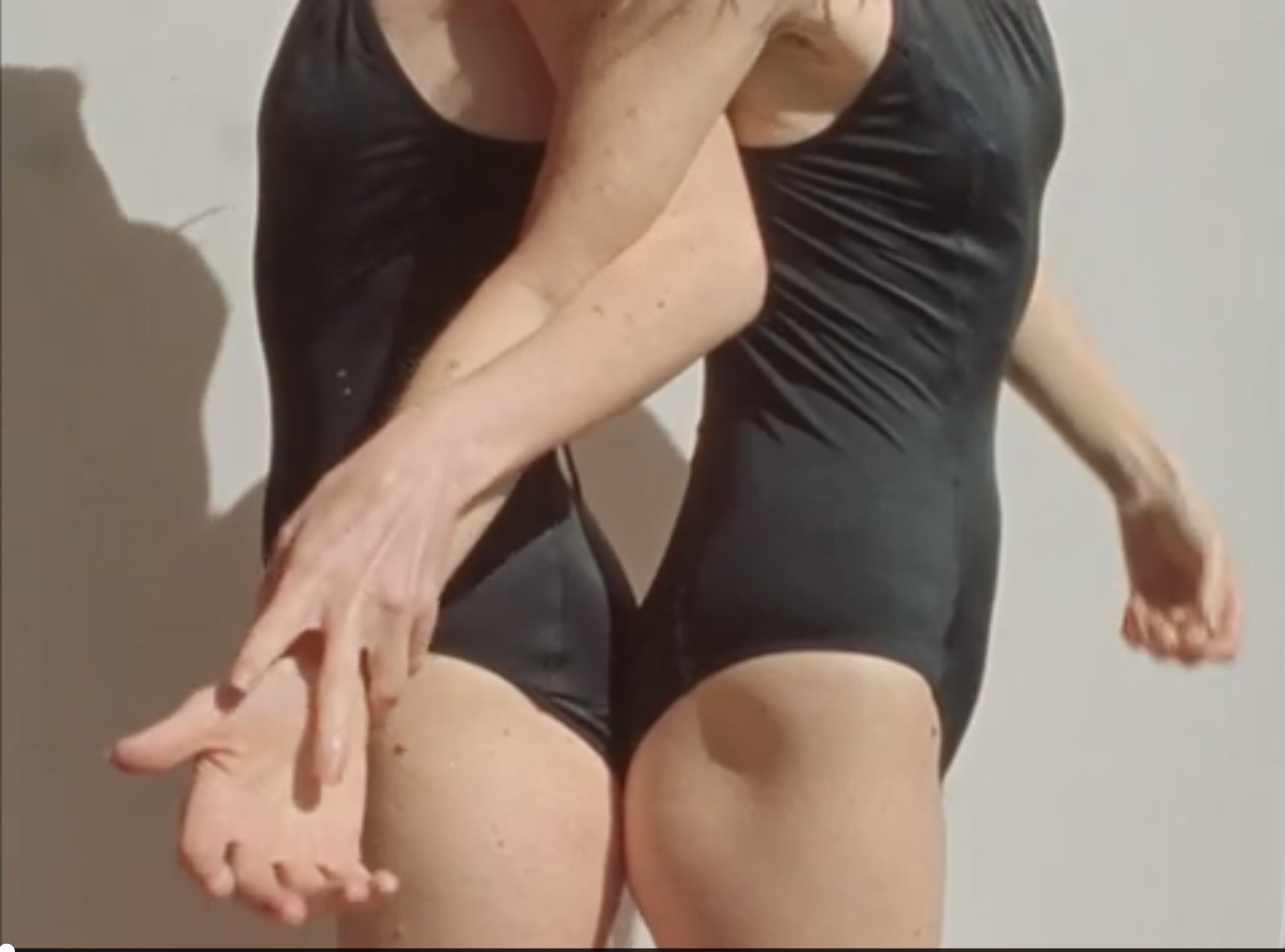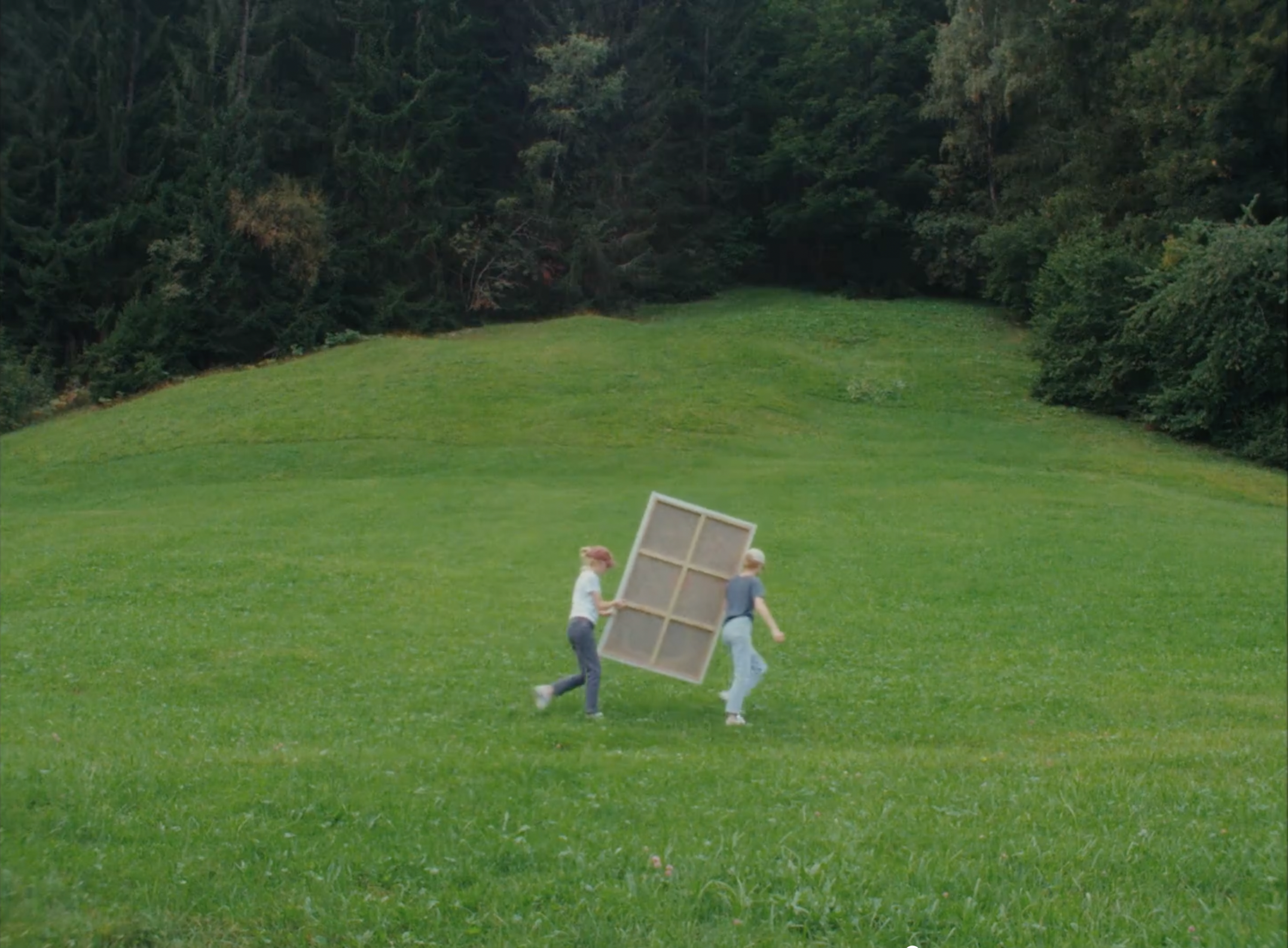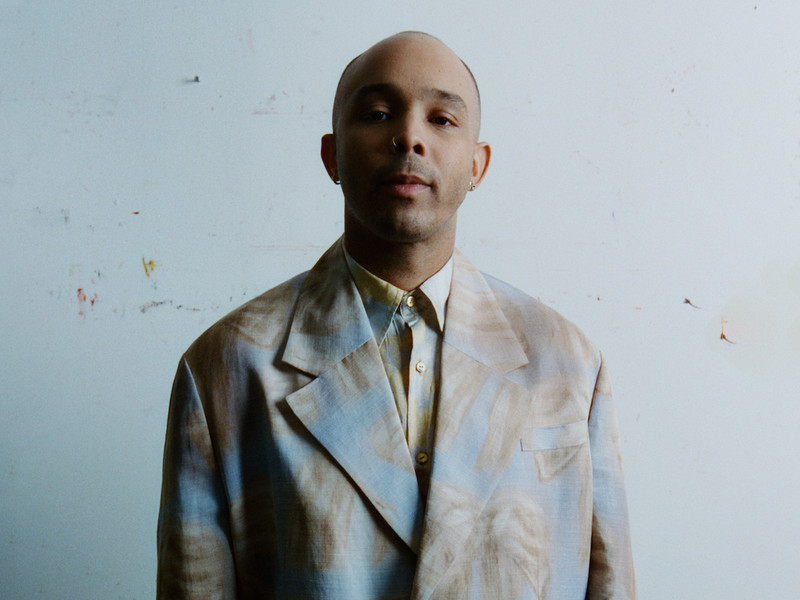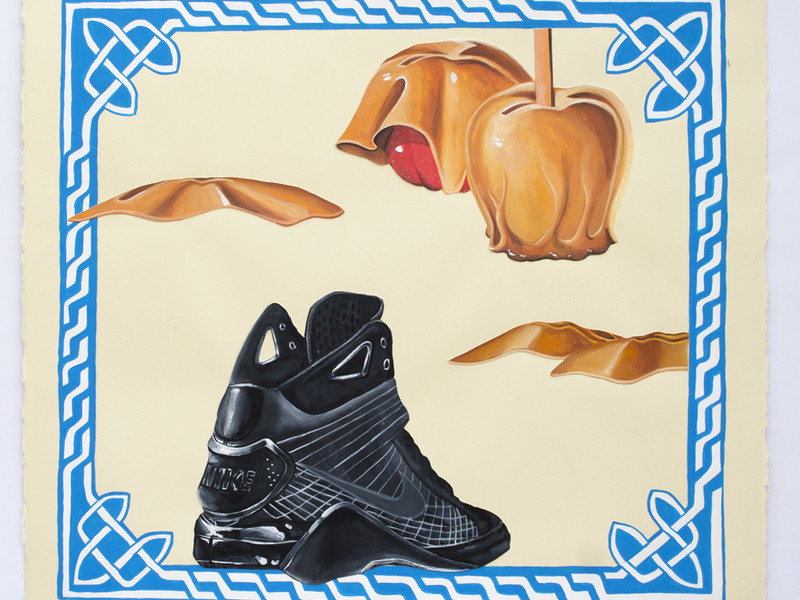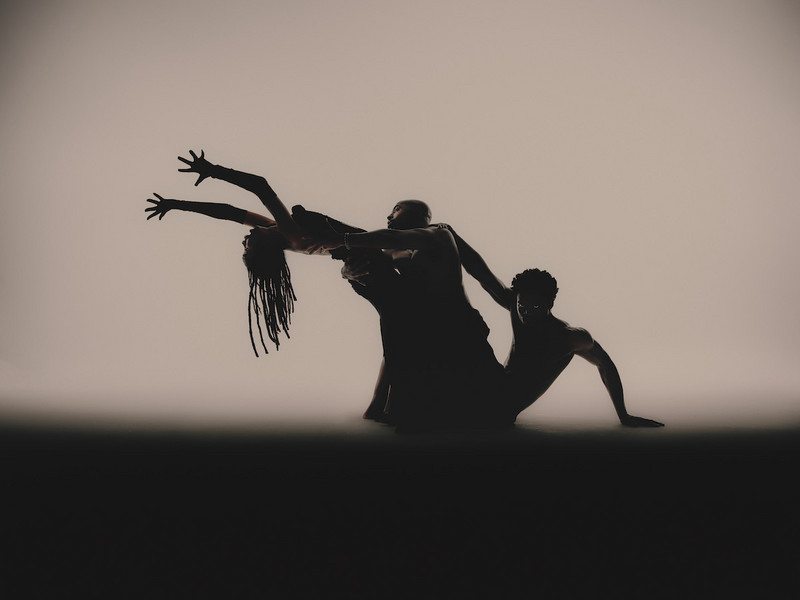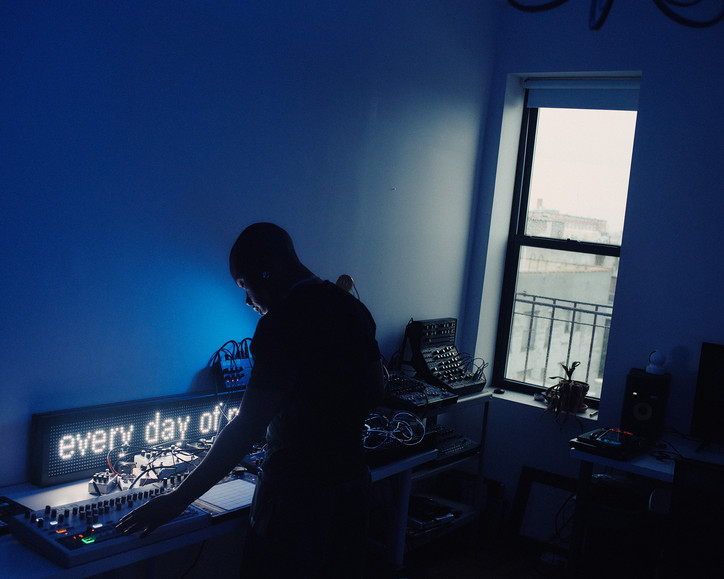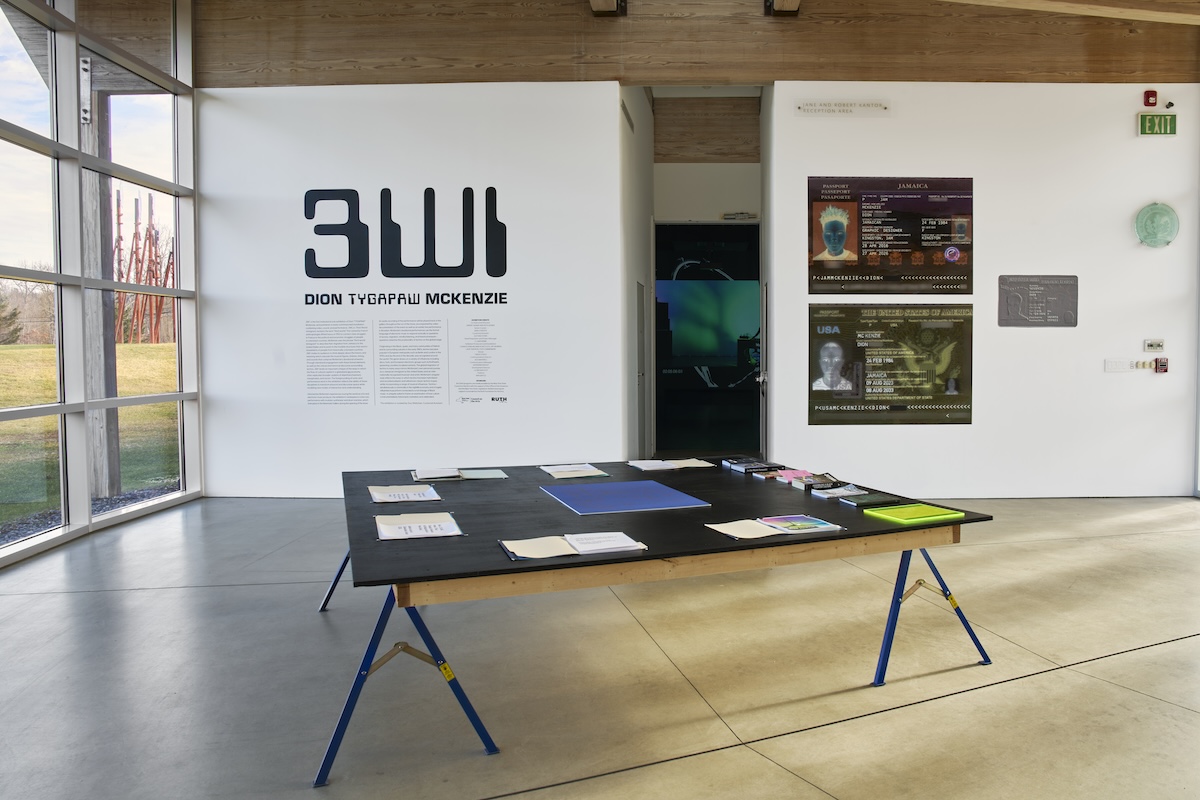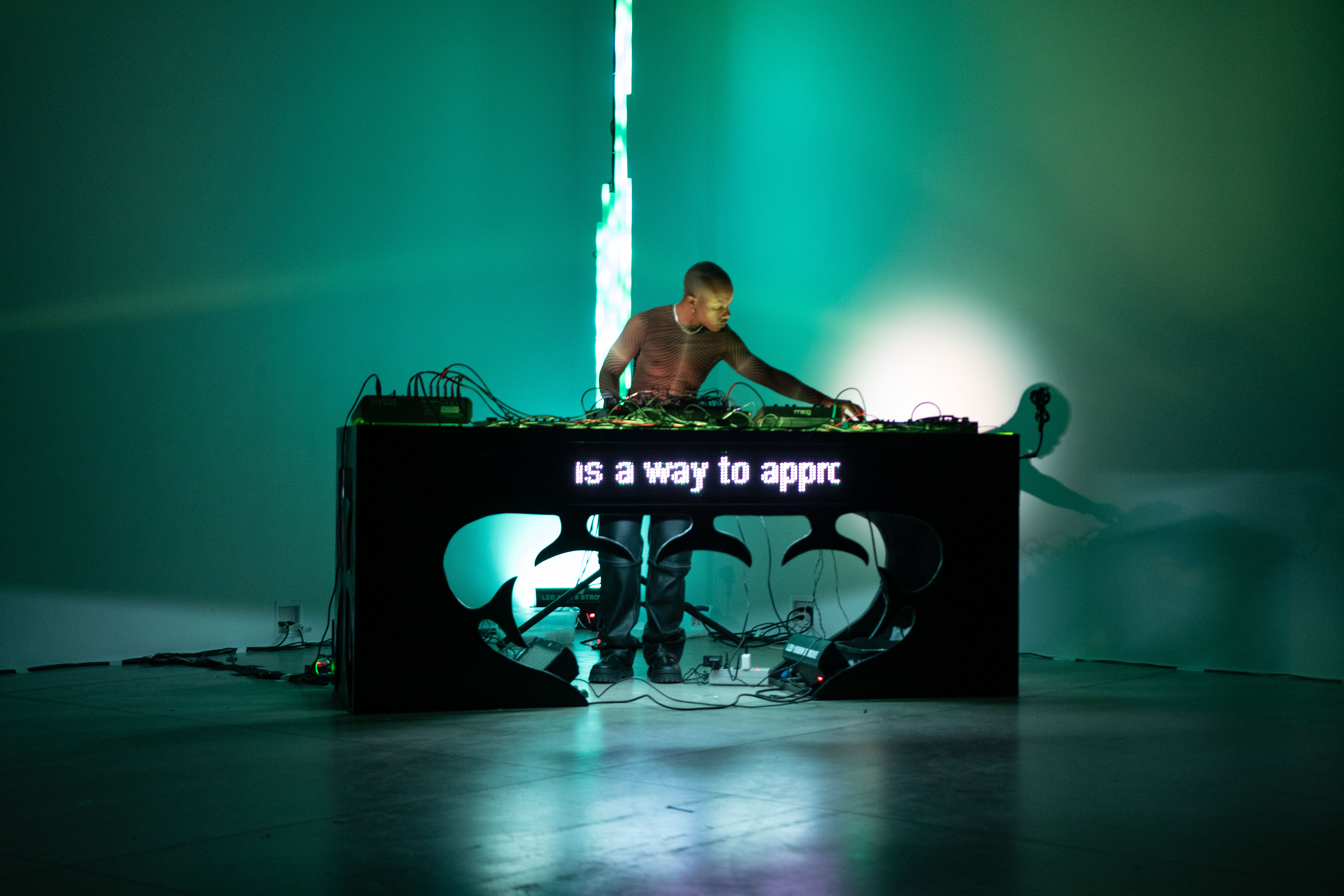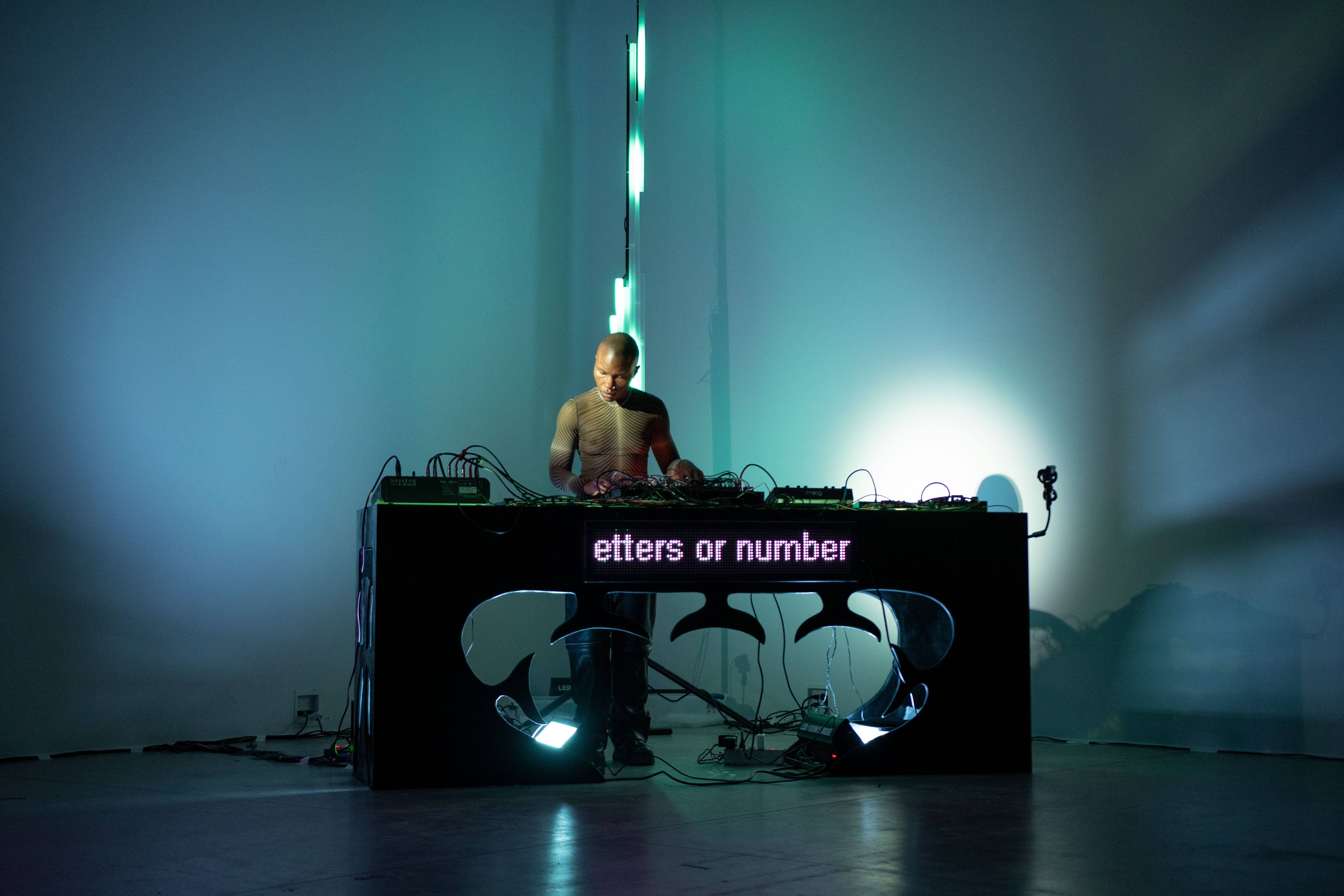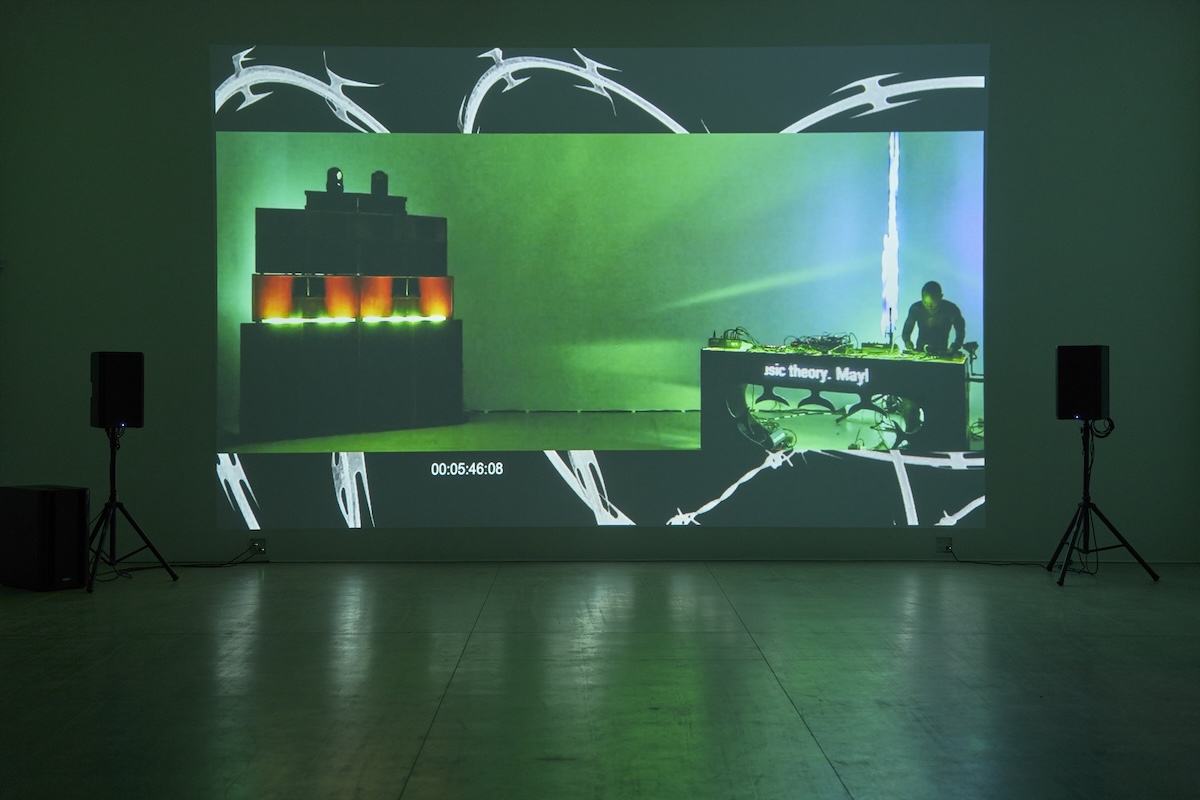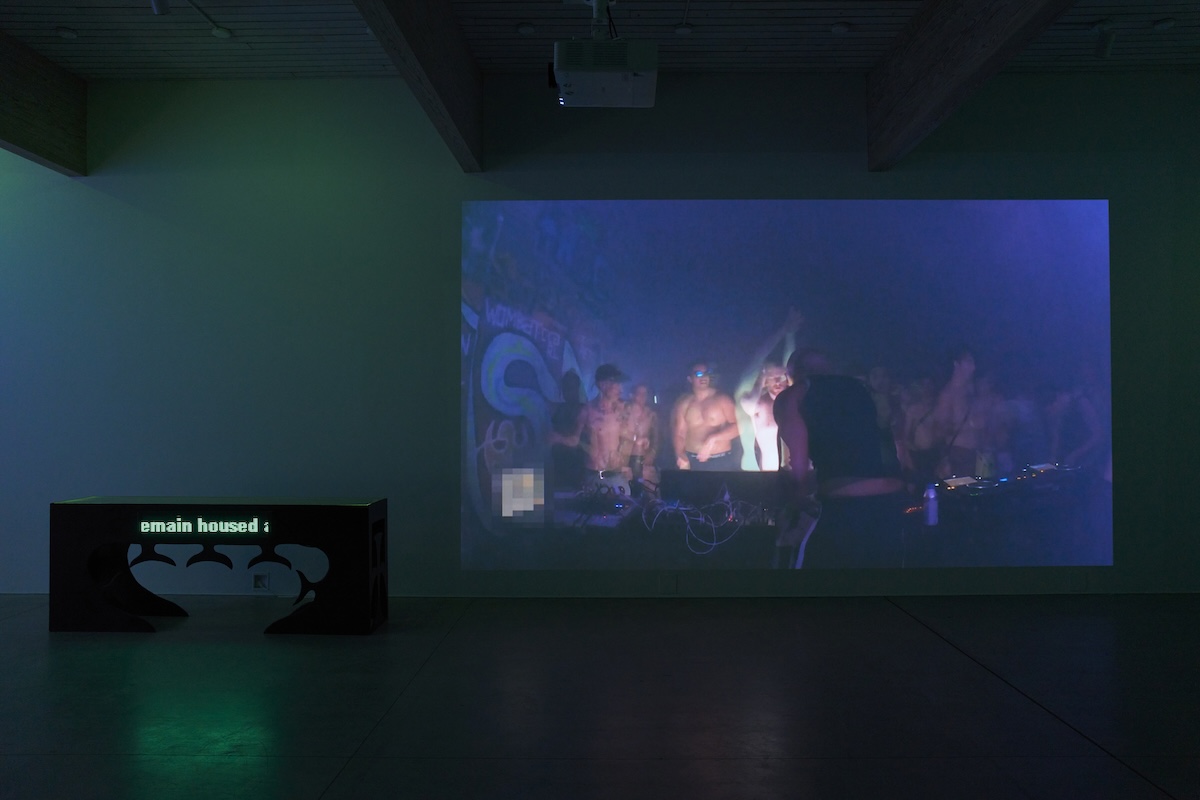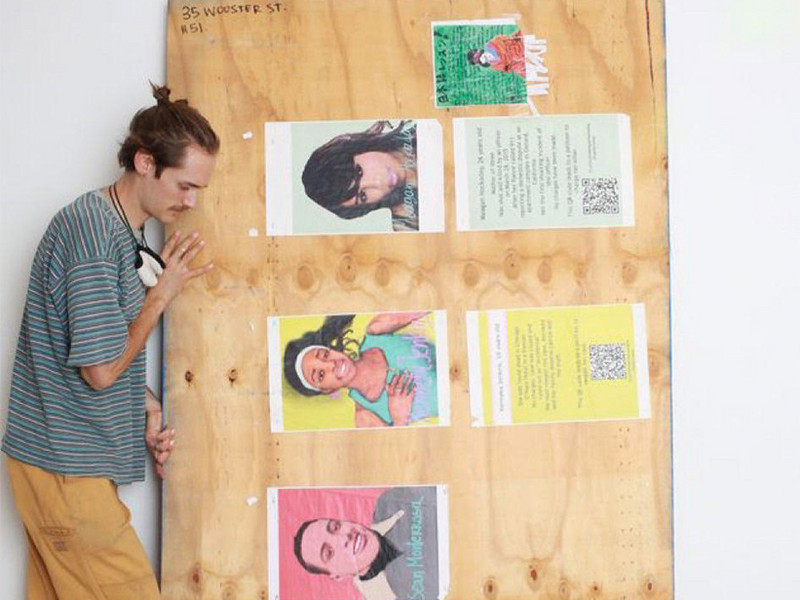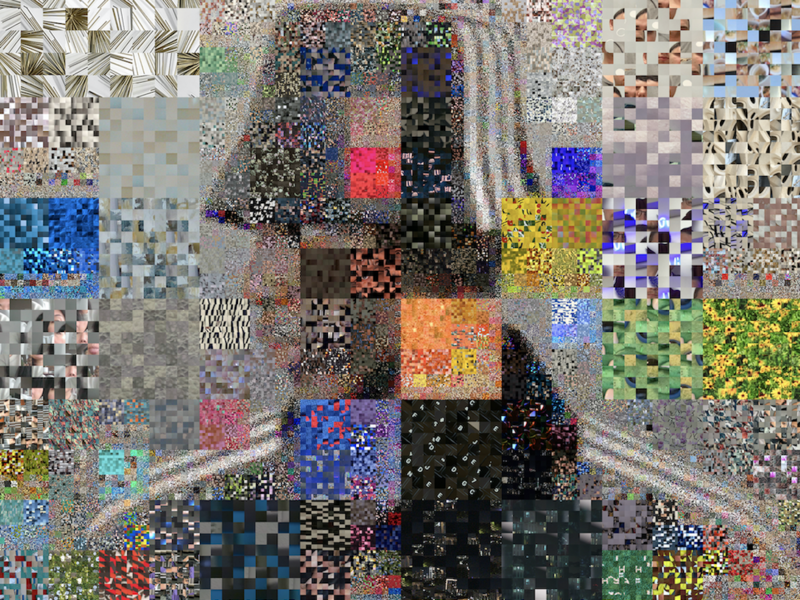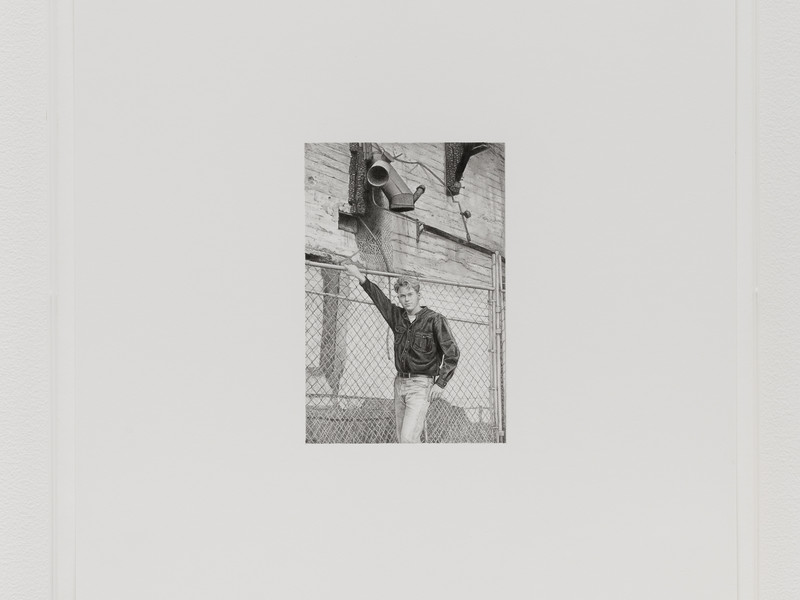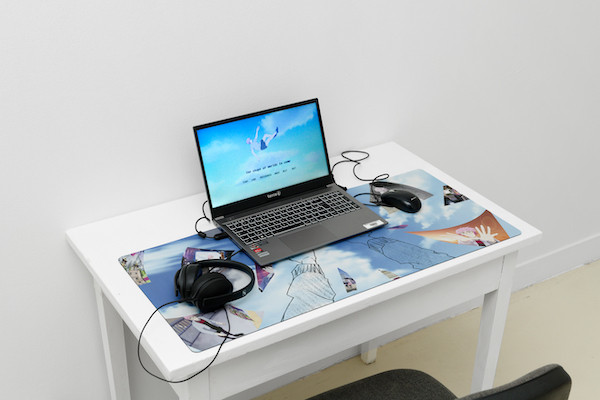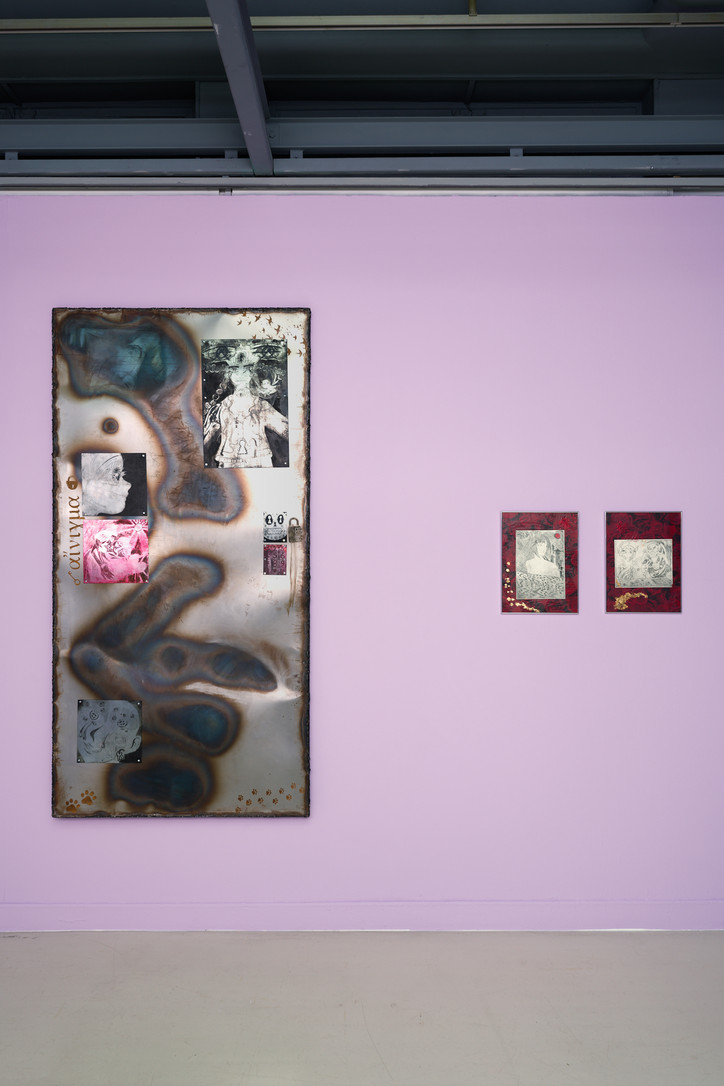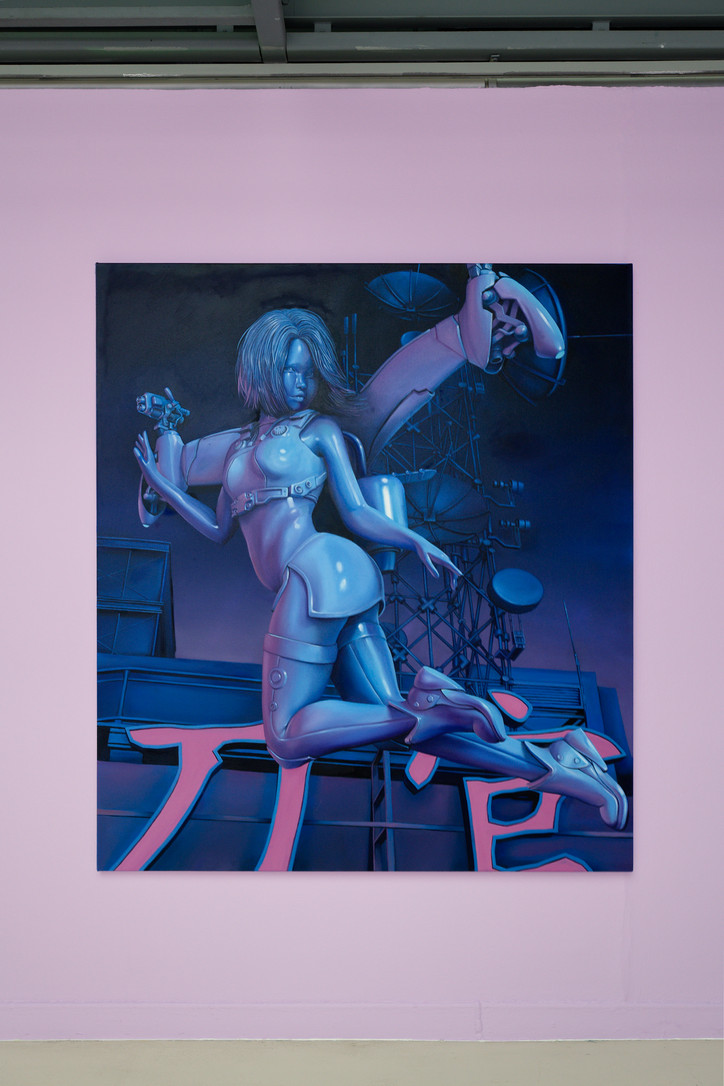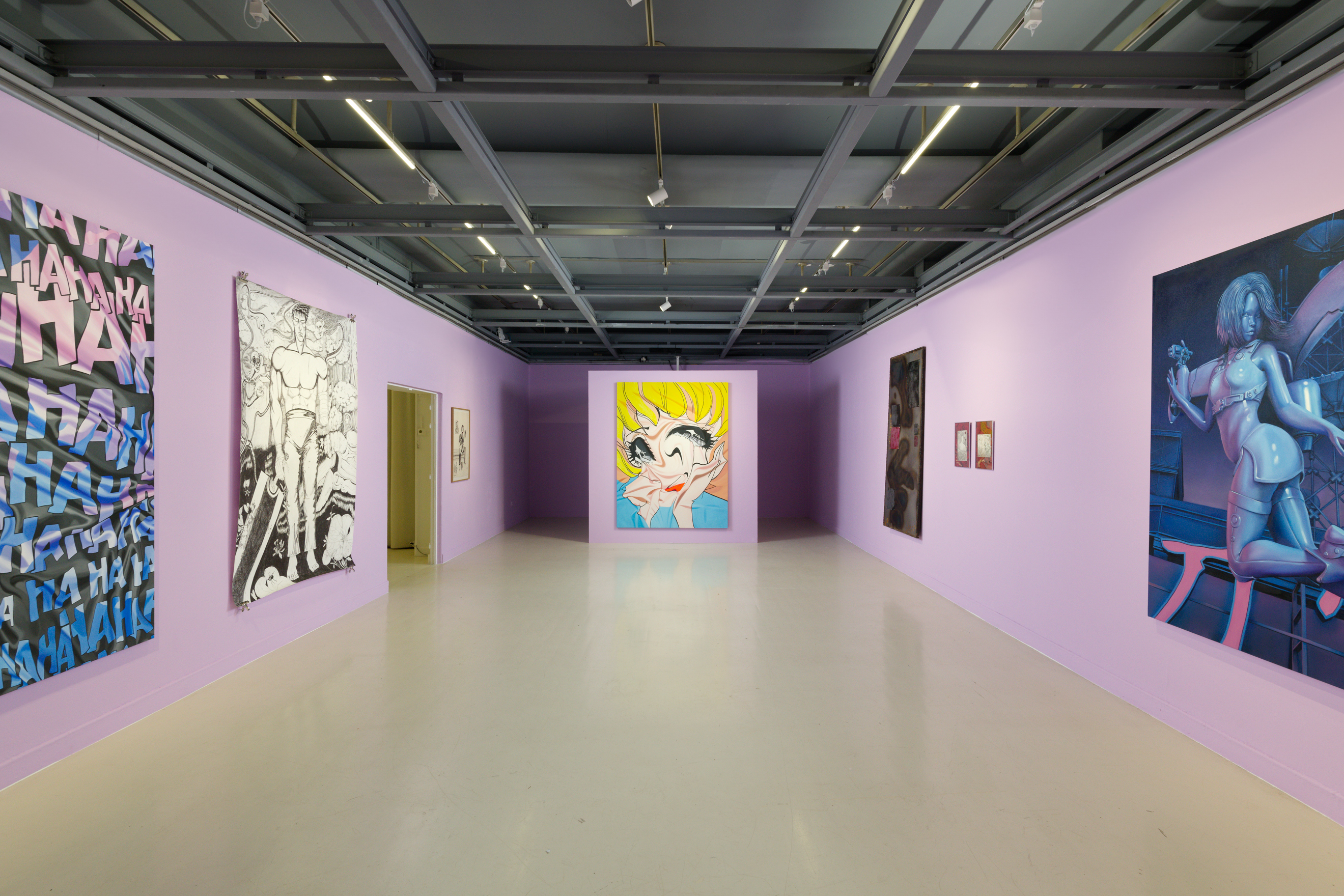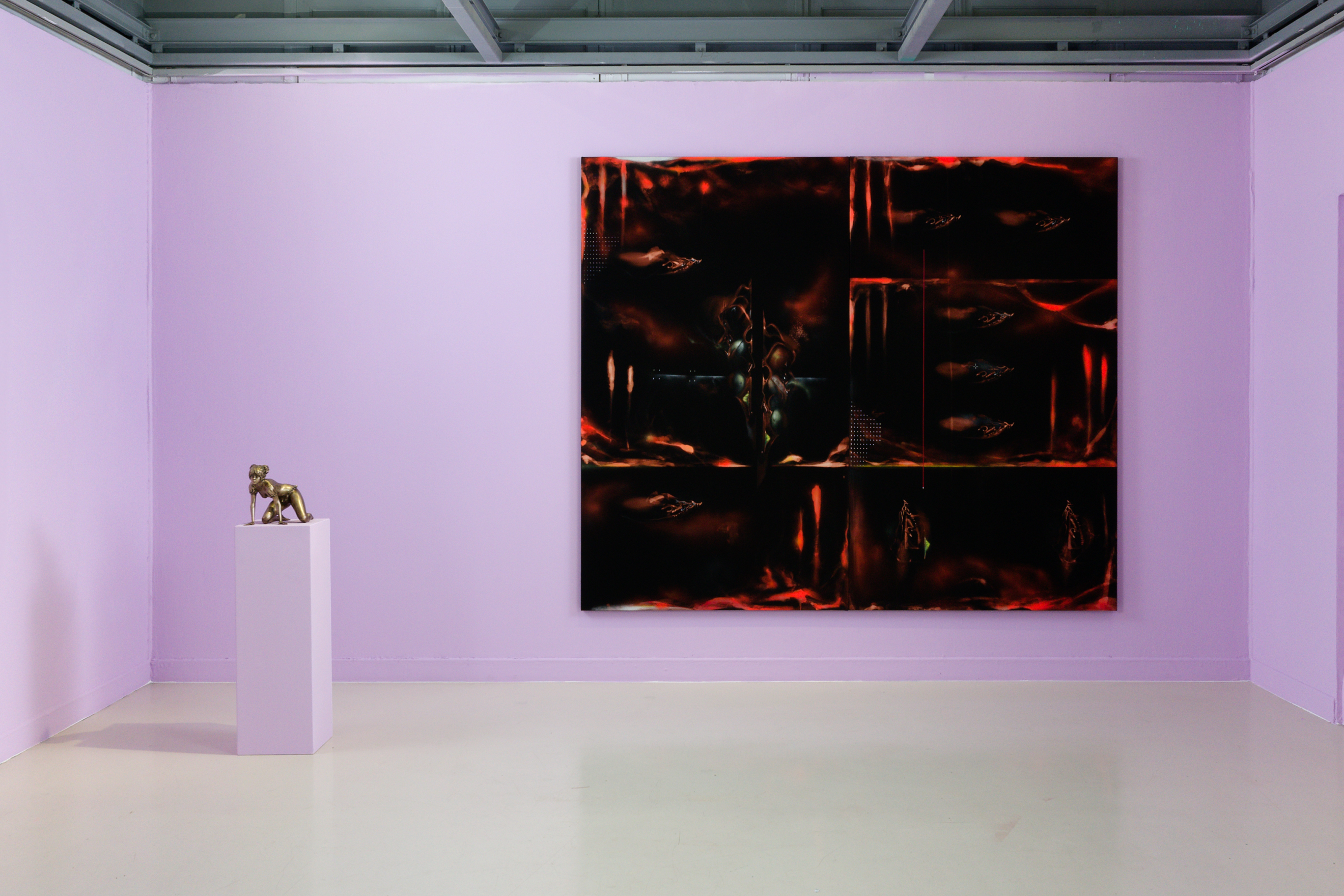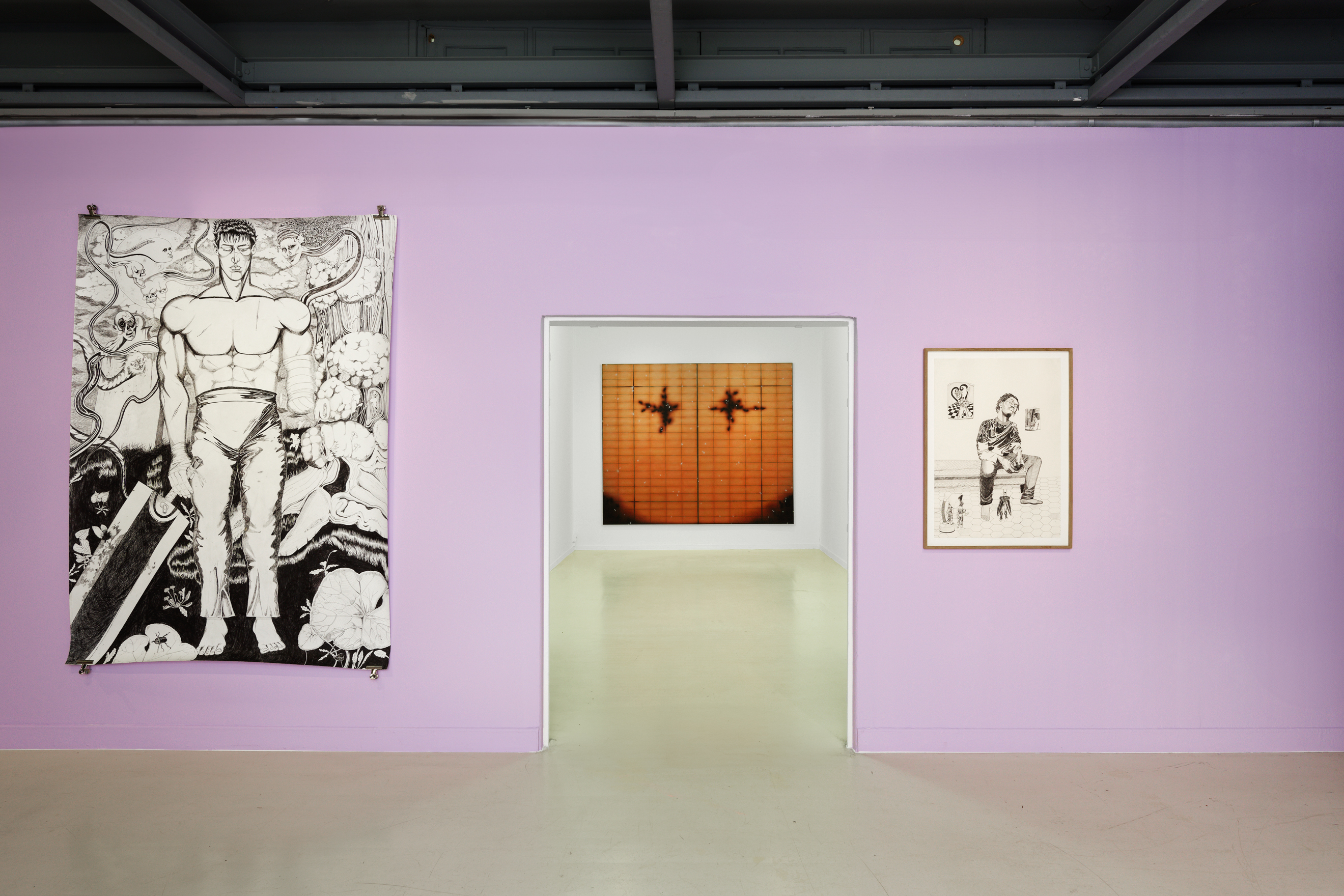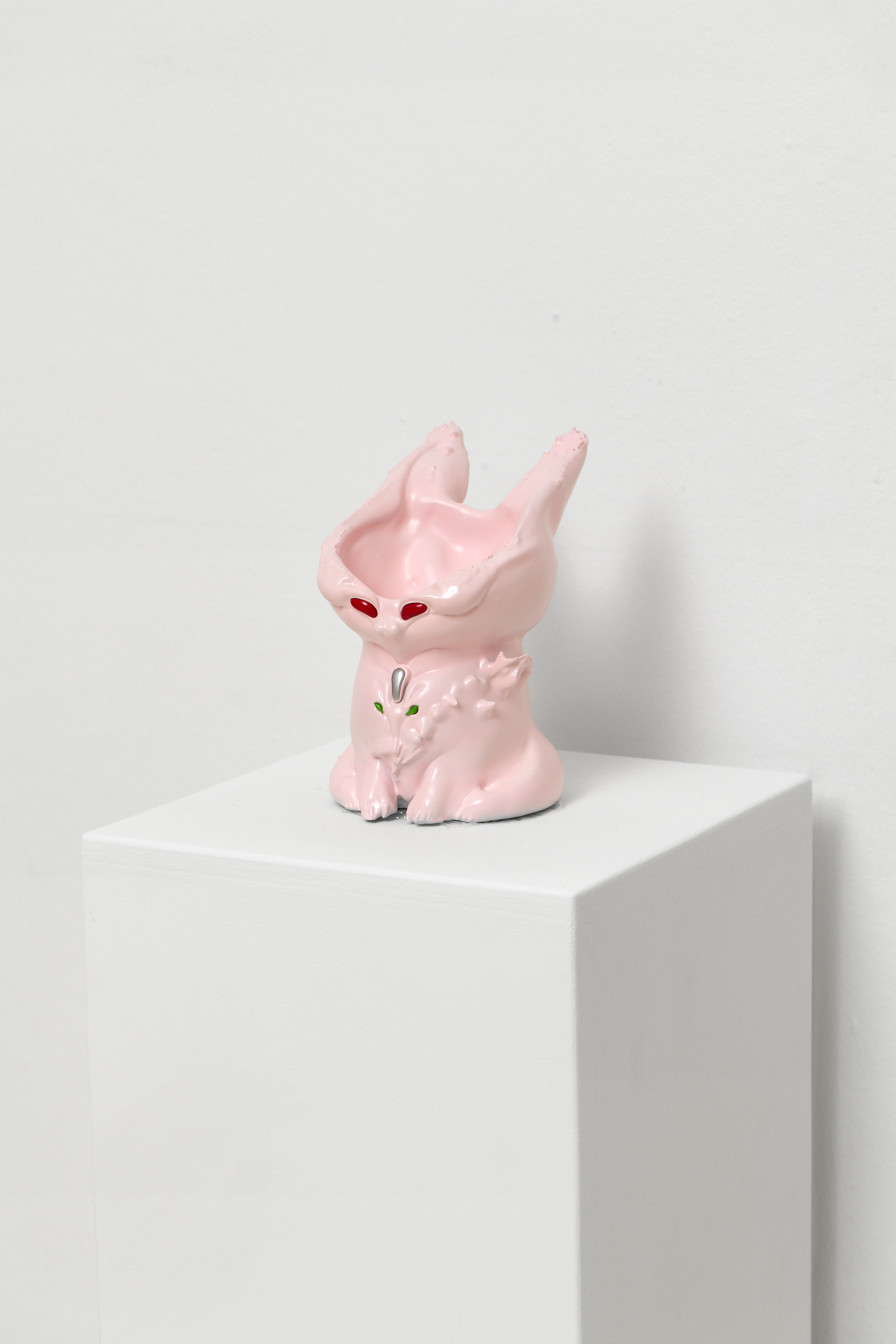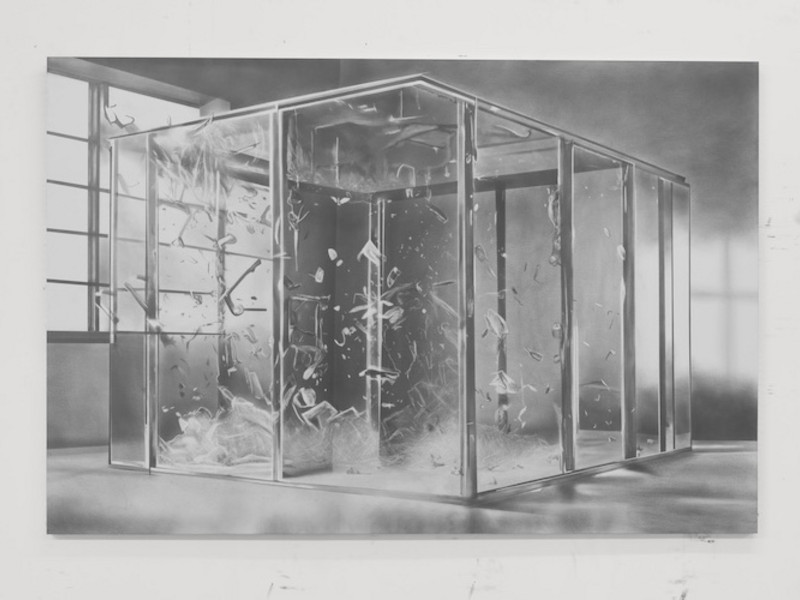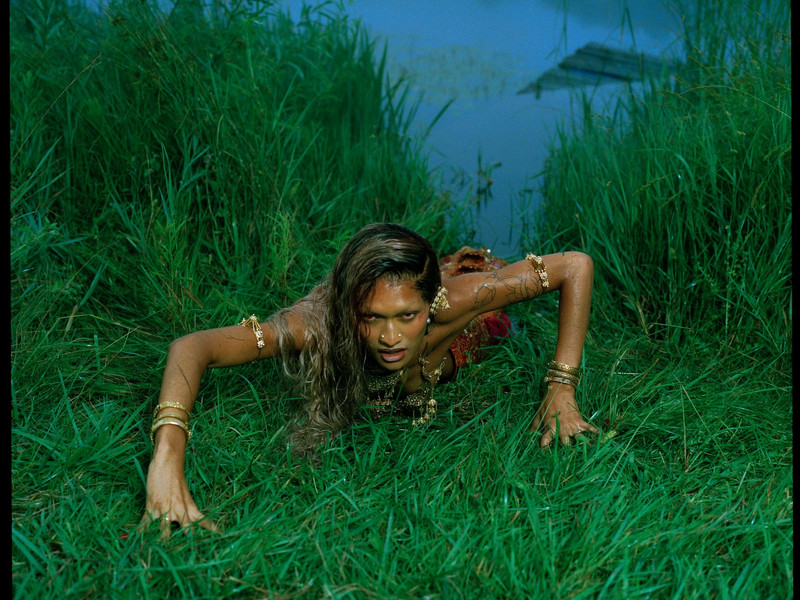Emma Louise Rixhon— So, tell me about the title of the show.
Alexis Loisel-Montambaux— They are the lyrics from a song by Johan Papaconstantino, who sings in Greek and French, meaning, “I cried at the end of a manga”. We chose it because it captures the profound empathies that we feel in relation to the fictions that surround us.
Felicien Grand d’Esnon— The English translation, however, doesn’t capture the expanded space and temporalities in the French, meaning you are crying during, at, or even about the narrative you are envisioning.
ALM— It frames the exhibition, showing how we sometimes direct exaggerated emotions towards fictions, especially in the context of what is happening currently in the world around us that is much more severe. But at the same time, these fictional worlds enable us to have necessary introspections and create interior worlds where we can incorporate characters as extensions of ourselves. These artworks are materialisations of where our imagined lives and our lived experience can meet.
FGE— We are looking at how universes based on manga, anime, and digital worlds create our intimate universes as we are coming of age, and how these then accompany us later into our adult lives and shape the ways in which we engage with culture and other human beings. We want to break the way in which manga is still often “othered” in exhibitions and show how it has become integrated into the visual cultures of so many contemporary artists. We are exhibiting art that shows how this aesthetic and intellectual media has been digested by so many artists from the world over.
Are you looking to canonise manga, then? Rather than having exhibitions only about it, showing art that uses it as a reference point?
ALM— Yes, we are looking to showcase contemporary art that uses manga as a prism through which to represent and reflect on other themes.
Eliza Douglas’ art explores the porosity between music, art, and fashion, that they feed into each other without clear distinctions. They collect merch from ubiquitous characters, such as Sailor Moon, and transforms iPhone photographs of crinkled t-shirts into hyperrealist oil paintings. Their process reflects on the creation of value in fashion, assigning assistants to paint them and then adding their signature as a monetisation of the work, like designers’ names embellishing garments. They also explore the endlessness of reproducibility, being paintings of photographs of garments featuring digitised images of televised drawings.
FGE— Gaia Vincensini’s work is in direct relationship to her family, particularly her grandmother’s practices. Using production methods which are haptic, such as zinc engravings, she materialises a knowledge exchange between generations. She incorporates representations of feelings, which you can uncover but not understand, through visual representations of manga and anime, with the materiality of collaboration between friends and family. Her drawings are her own creations, they are not existing characters, but more like guardian angels.
